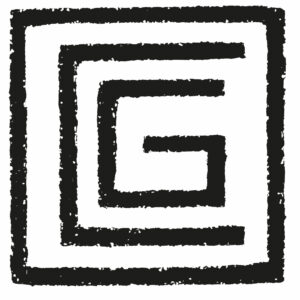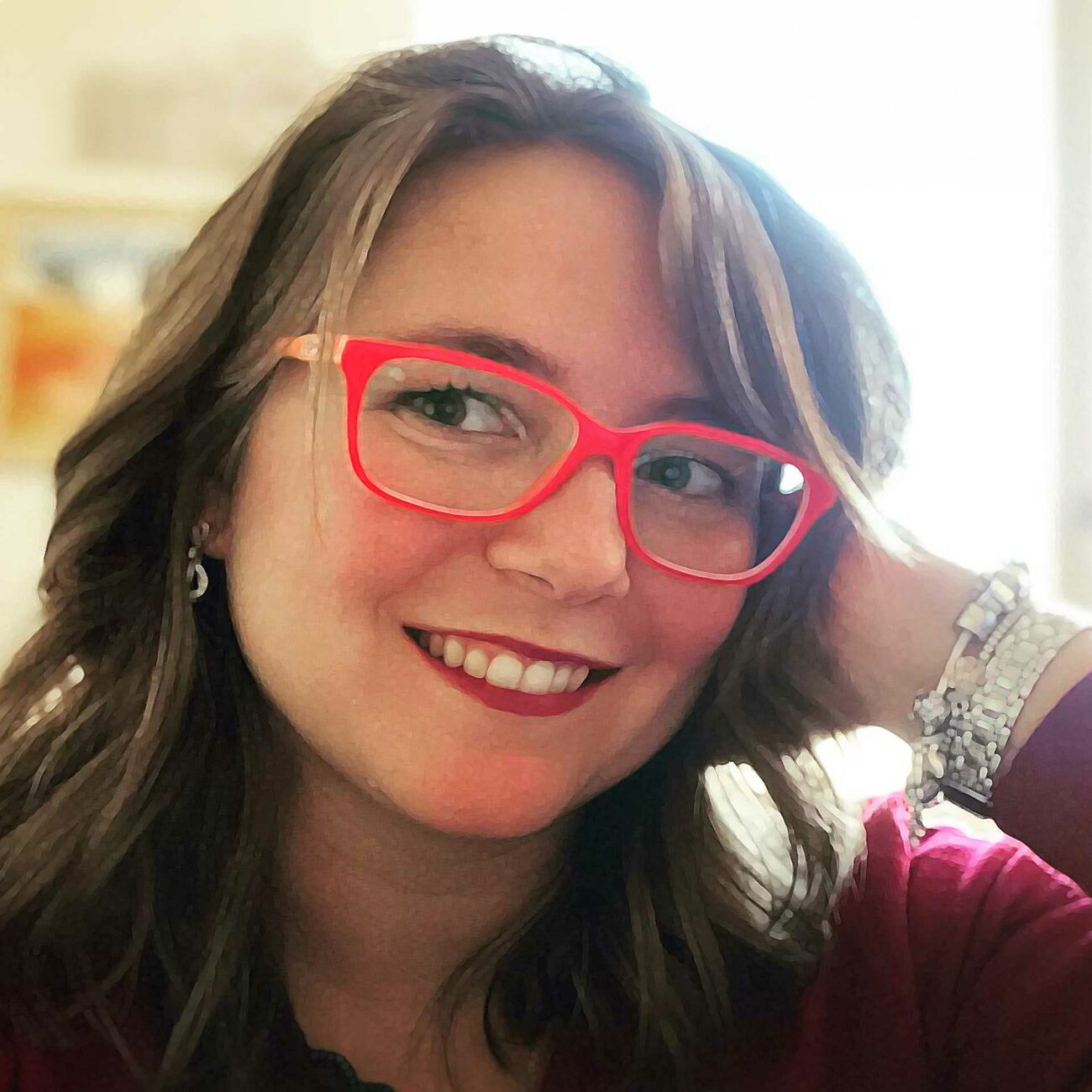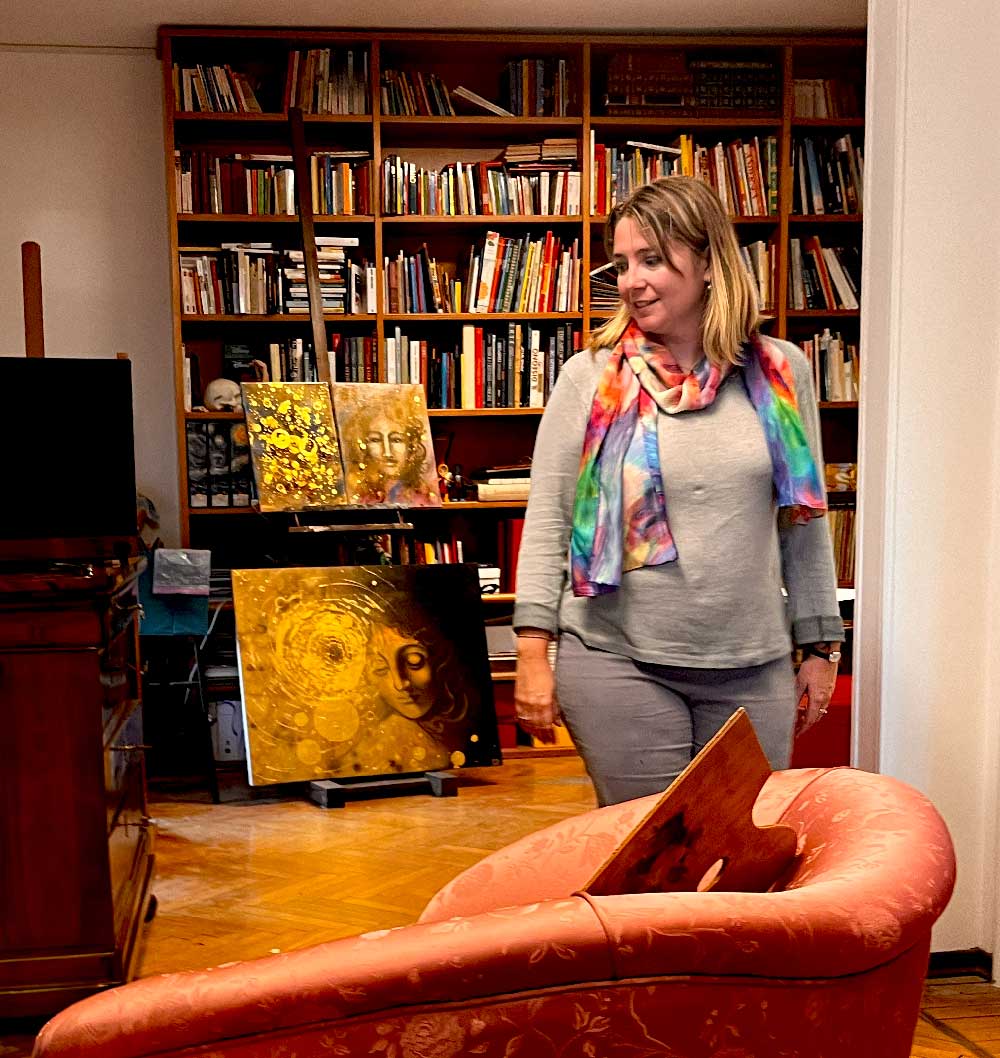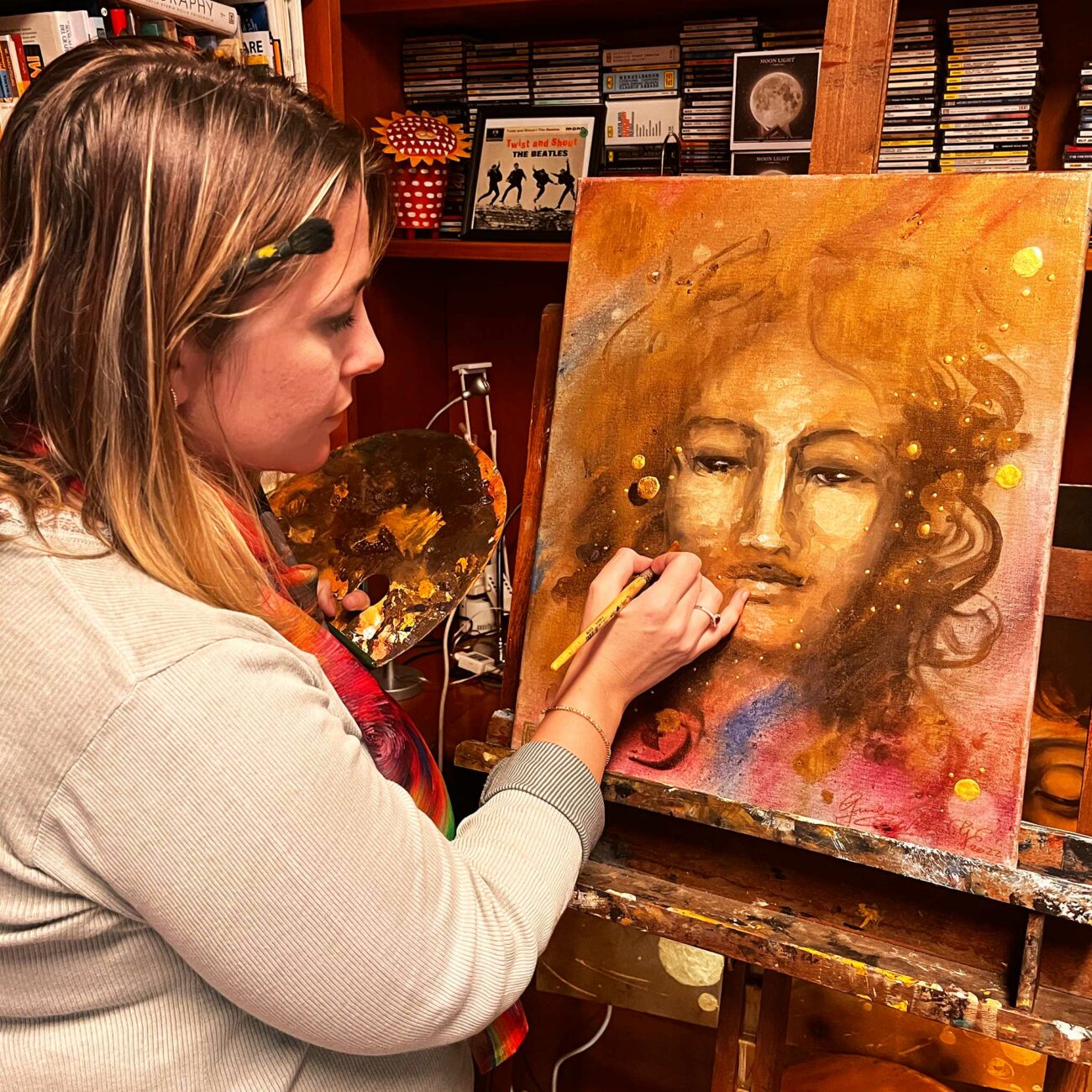Me
I was born in Milan in 1988, and attended the Lycée Stendhal French school until my high school studies, which I then decided to follow at the Liceo Artistico Statale Umberto Boccioni.
After high school I attended the Faculty of Letters and Philosophy at the Università Cattolica del Sacro Cuore for two years, specialising in Cultural Heritage Sciences.
I then moved to the Brera Academy of Fine Arts where I obtained a three-year diploma in Painting with a thesis on symbols related to salt in the Christian religion, alchemy and contemporary art.
I also attend two specialisation courses in illustration at the European Institute of Design.
My artistic research is aimed at creating dialogues between the art of the past (particularly medieval art) and contemporary art, trying to convey, through the study of art and ancient disciplines, concepts that are valid in contemporary discourse.

Over the years I have held several traveling solo exhibitions and participated in various group exhibitions.
My art is a constantly evolving path that expresses itself through different mediums, always trying to remain free from stylistic fossilizations.
Figurative Abstractism
Abstract painting is an expressive current that boasts the most diverse forms of communication.
If we want to explain abstract painting in a summarising but not entirely exhaustive manner, we can say that the pictorial image is not intended to represent subjects that can be ascribed to visible reality. It is in stark contrast to figurative painting, which precisely proposes figures that are more or less real but can certainly be attributed to a perceptual sphere.
Abstract is the exact opposite, a-figurative, not (usually) presenting figures. It can be art for its own sake (Rothko, art for art's sake) or it can evoke feelings through the power of colour... perhaps of all its nuances, it is the latter that interests me the most and that can be applied the most to my idea of fusion with the figurative, a research I have been working on for years.
During one of my personal reflections, however, I realised that my abstracts are not entirely definable as such. My abstract language, apart from being particularly evocative of certain visions of deep space or the sea abyss, wants to represent something existing: our spiritual reality, the most intimate and intangible part of ourselves.
Since the dawn of time, the human spirit has sought ascent, elevation from its condition, transcendence from this finite life. Desire for the Highest, exploration of one's inner heaven or the Platonic world of Ideas... Universal yearning.
It is this sphere that I want to represent with my paintings, which I easily call abstract but which in reality are not, because they are meant to represent an existing reality, perceivable but difficult to report.
The often recurring golden discs are symbols of thoughts and feelings that seek the way upwards, towards a greater light, a light made of spirit and unrepresentable.
They are Ideas ascending, creating paths of light, or thoughts rising like stars in nebulae...
Giulia Calvanese
My Symbols
- The Circles
By now, ‘my golden discs’ are the stylistic signature of my works and are meant to be a reference to both the inner world and Plato's World of Ideas.
The circle is a symbol of infinity, immutability, completeness, Eternity (and eternal return) and of Creation. I love this geometric figure very much, also for the ancestral significance it has.
The world we live in, the stars we come from, the planets, the egg that gave us birth, are all more or less perfectly circular in shape. It is a familiar, atavistic shape, inherent in us.
My' circles are not perfect.
There are no perfect circles in nature, although in an abstract and theoretical way we can conceive them, calculate their dimensions and perceive their Idea.
By their imperfection, I want to emphasise precisely this aspect: they cannot be perfect because they belong to ‘our’ earthly, human, finite world. They are the reflection of images, Ideas, which are perfect and which, as Plato would say, exist in the Hyperuranium and are perceived by us in a nebulous and incomplete way, with the intellect or with the depth of our innermost feeling. And this is my role as an artist and the purpose of the art I have as a gift, in the words of Paul VI: ‘to take from the sky of the spirit its treasures and clothe them with words, colours, forms, accessibility...’. In other words: translating into a finite and sensorially perceptible language what is the exact opposite, infinite and not ‘tangible’ by our five human senses.
In the specific case of this exhibition, in addition to gold discs, silver discs are observable, especially in ‘Memoirs of Heaven’. In fact, I wanted to use chrome ink to evoke the reflection effect that is typical of mirrors, to suggest the idea that ‘we are in the stars’. The viewer, in fact, can theoretically reflect himself in those star-discs and realise that he too belongs to the celestial dimension represented.
- The Salt
In many works in this collection you will find grains of salt. This element has accompanied my artistic research for a long time now and was also the subject of my diploma thesis at the Brera Academy.
Besides allowing me to create peculiar effects when used with watercolours or watercolours in general, it is also a symbol particularly rich in meaning. Due to its physical characteristics, salt preserves and conserves, it is important food for human sustenance and is the element that brings flavour and enriches.
Many artists have cited it in their works, from Leonardo in his ‘Last Supper’ to Anselm Kiefer in his exhibition ‘Salt of the Earth’ at the Magazzini del Sale in Venice; and many use it directly in their works such as Motoi Yamamoto or Bettina Werner.
In the context of this exhibition, I used it to emphasise the need for conservation. If with my paintings I have managed to ‘recover’ certain Memories of Heaven, it is necessary to preserve them in order to pass them on like photographs in a family album. What better than salt, which is both a preservative and a memory of ancient oceans and seas that have disappeared, could preserve, protect and ‘ferry’ our ancestral memories into the future?
- The Tears
You might notice that some of my paintings on paper are torn.
It is an action I perform on purpose, not to destroy the finished work that does not meet my personal standards as an artist, but rather to communicate an entirely different concept.
It should be pointed out that I tear up the surface I work on before starting work; I could consider it an action that is part of the preparation to receive the paint layer. This act carries with it a symbolic charge that becomes part of the work itself. The tearing emphasises that what we have in front of us is part of something larger, not visible, in a certain way ‘absent’ to our senses.
As a predominantly painterly artist, as already mentioned, my mission is to translate into visual language something that even I cannot fully comprehend. The works I create are but shreds, small pieces, fragments, of a wonderfully unimaginable Something that I can barely touch with my artistic sensibility.
Those that you can see in this exhibition are therefore fragments of a greater reality that I perceive deeply and that I try, in a totally imperfect and incomplete way, to give you in some way to make you perceive how much more unlimited, infinite and eternal there is.
Never was there a crazier, more impossible and infinitely exciting undertaking than that of us artists, the small, astonished storytellers of Inimitable Infinity.
Giulia Calvanese
Exhibitions and Contests
Years of experience
Liceo Boccioni
2002 - 2007
Accademia di Brera
2009 - 2013
Istituto Europeo di Design
2015




